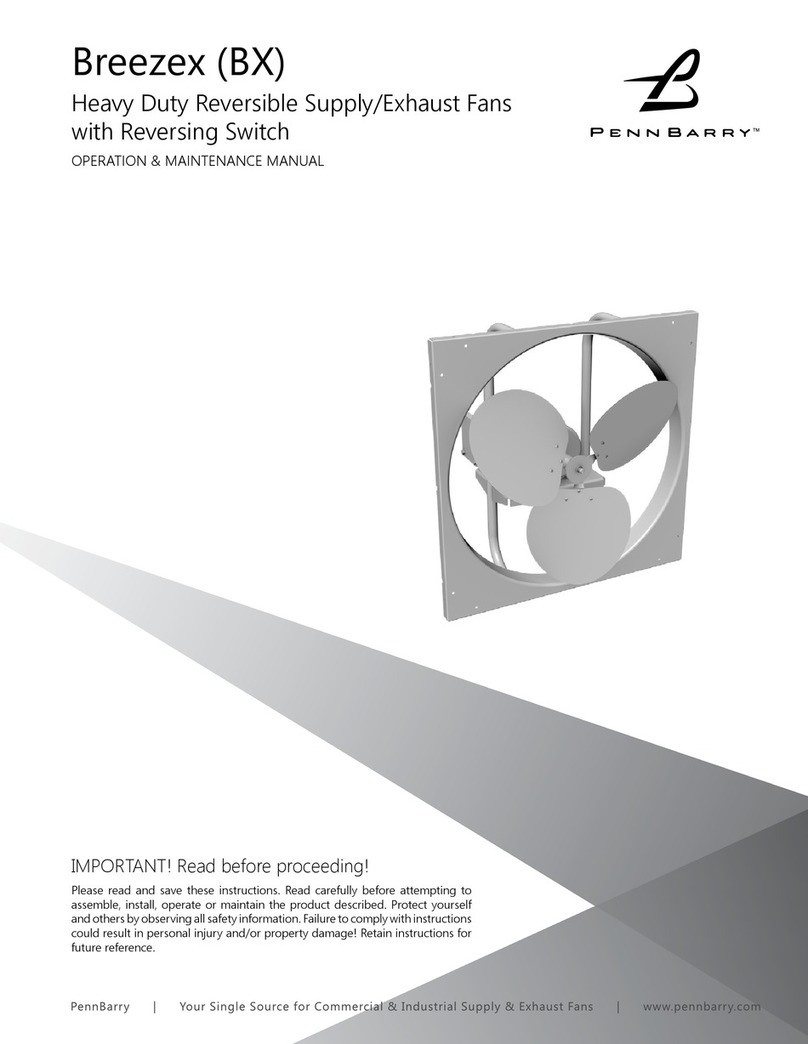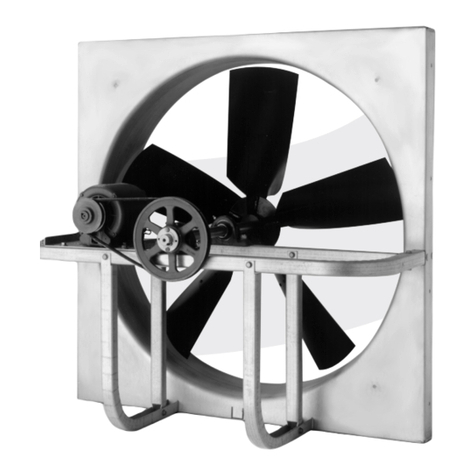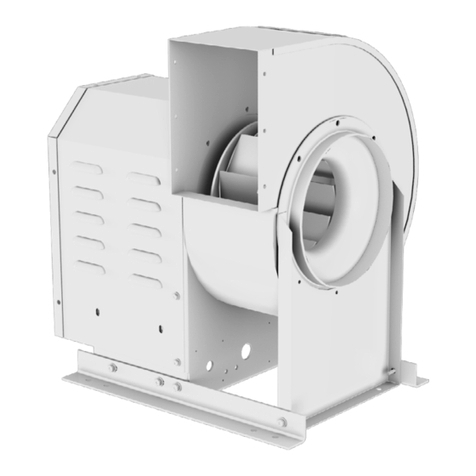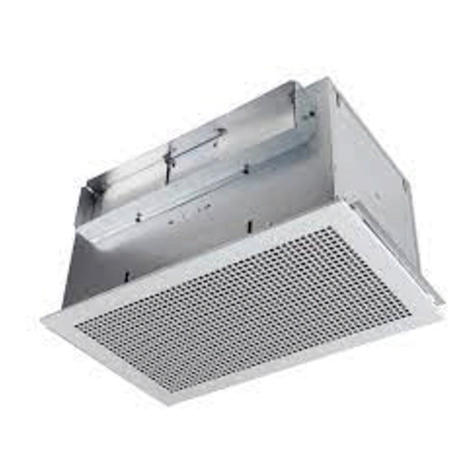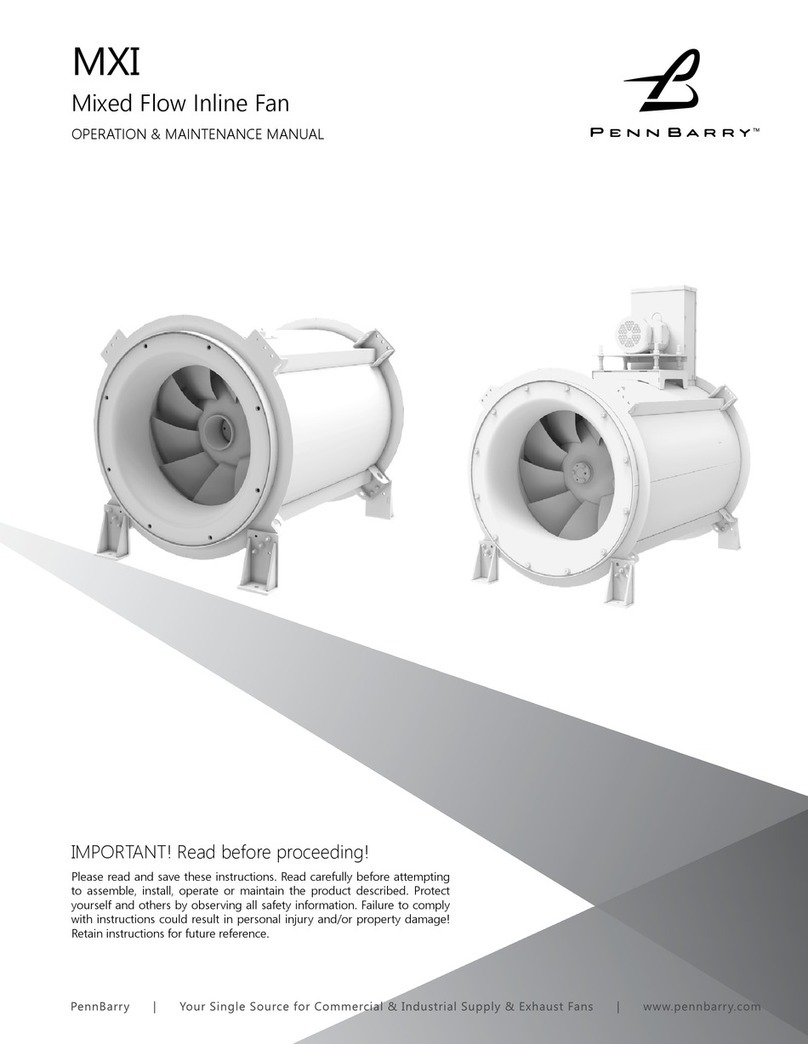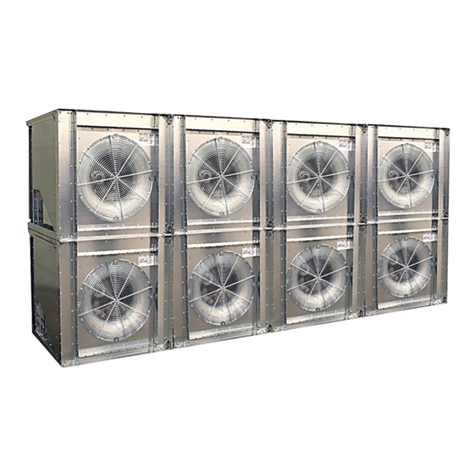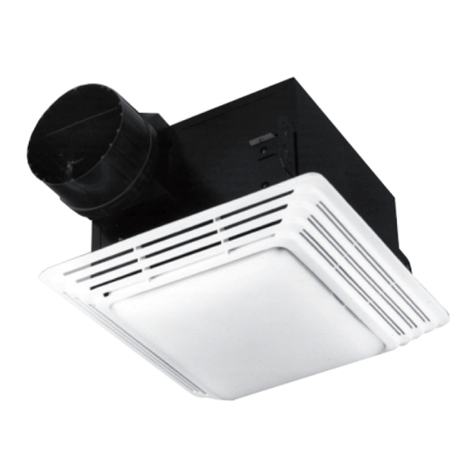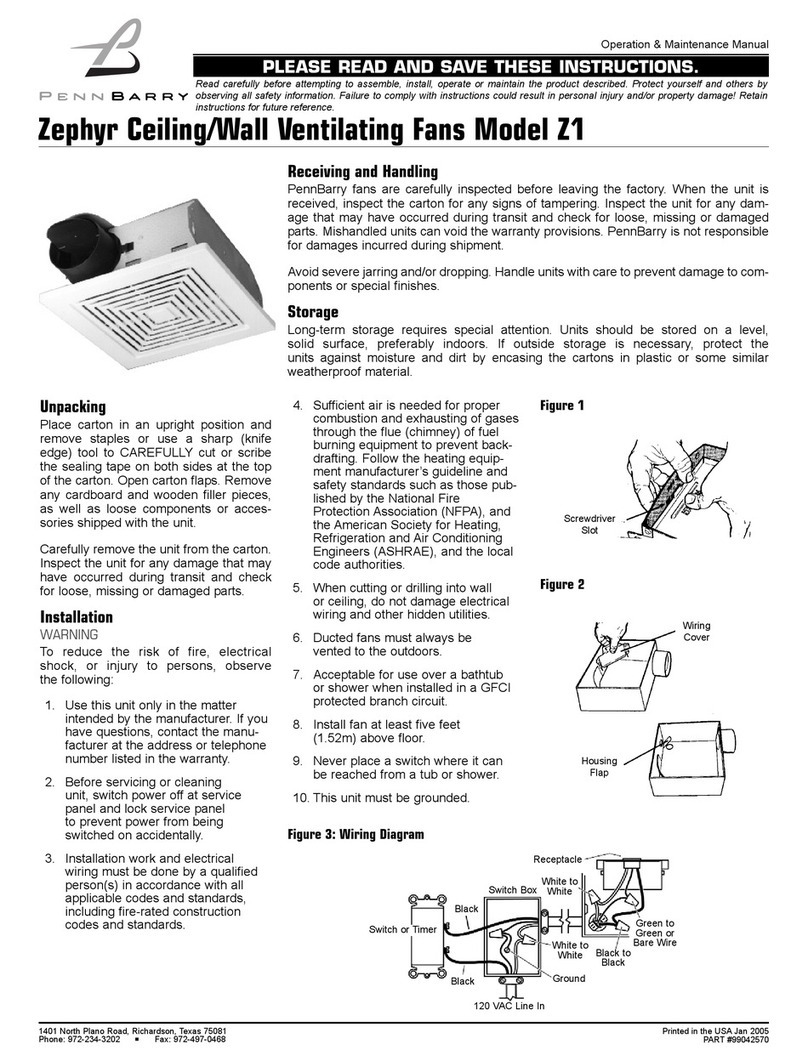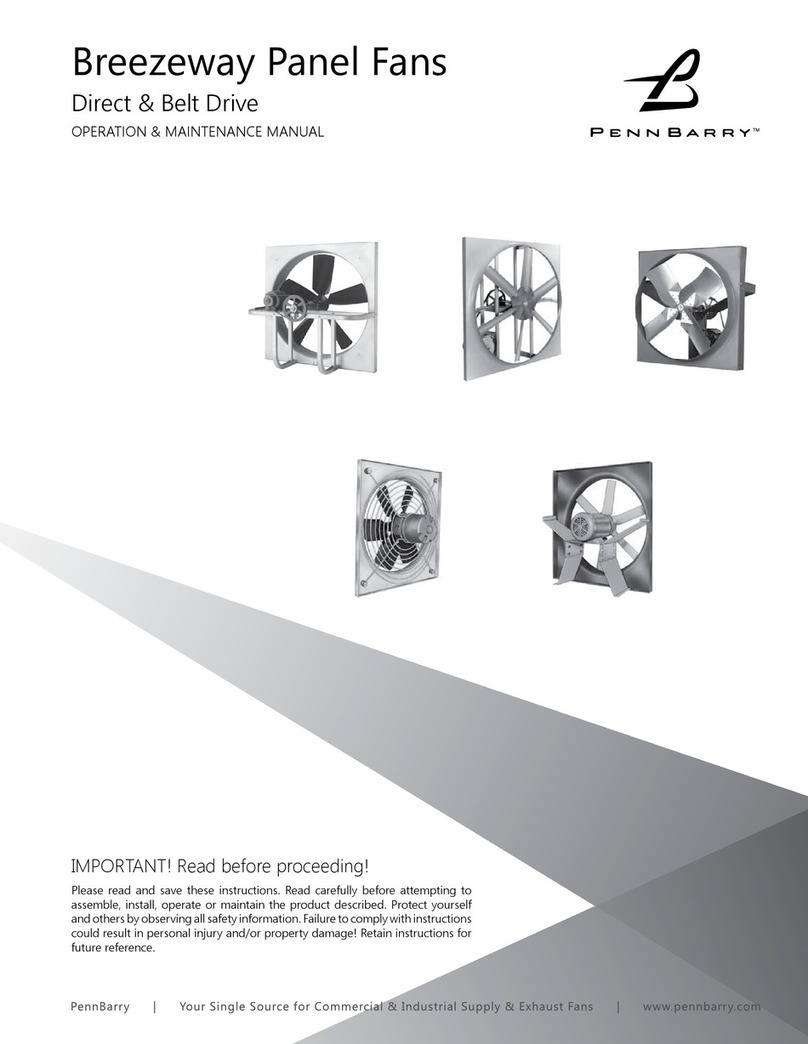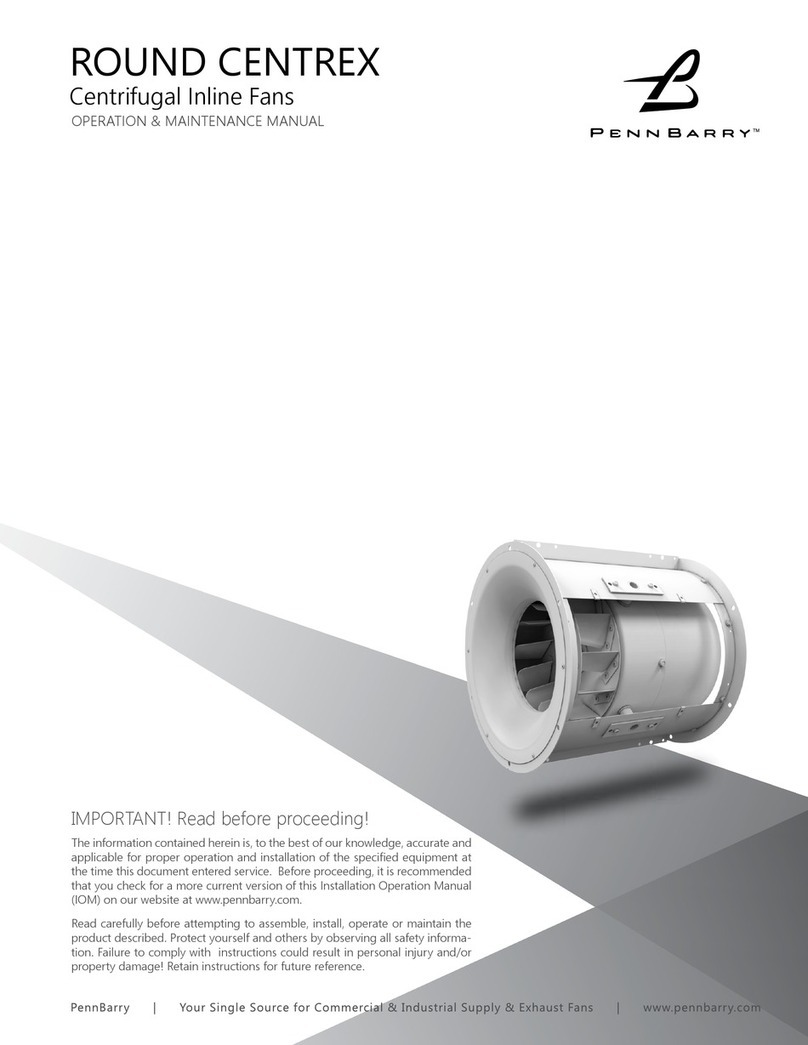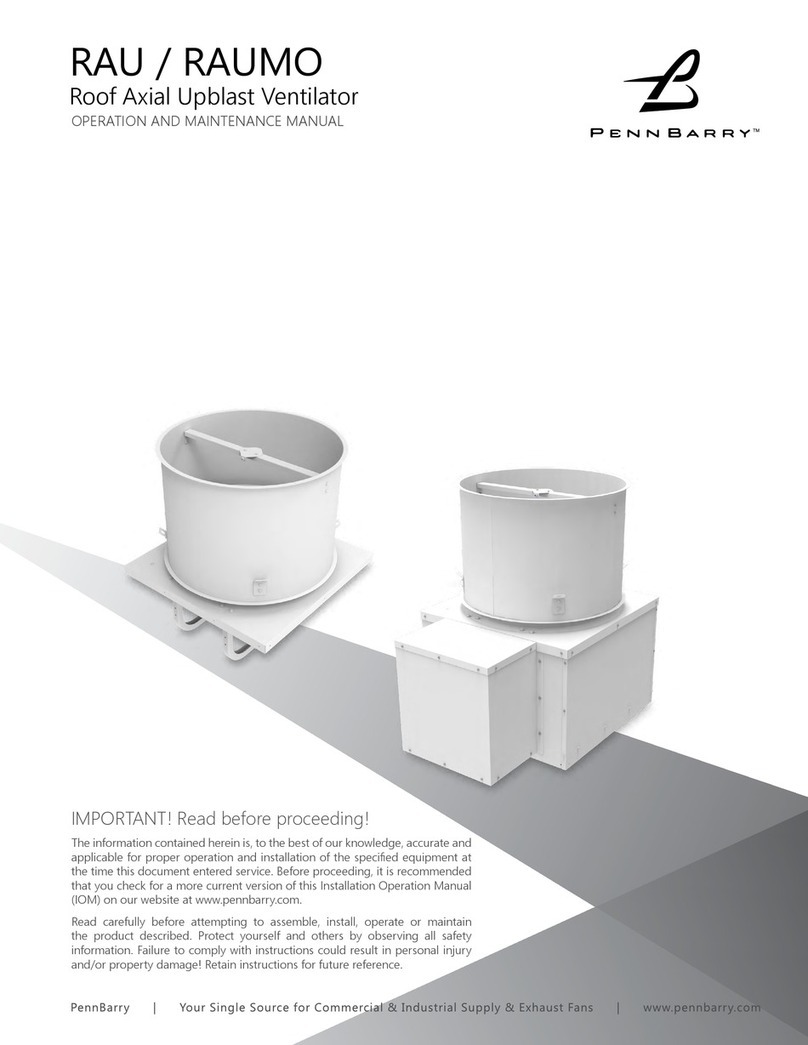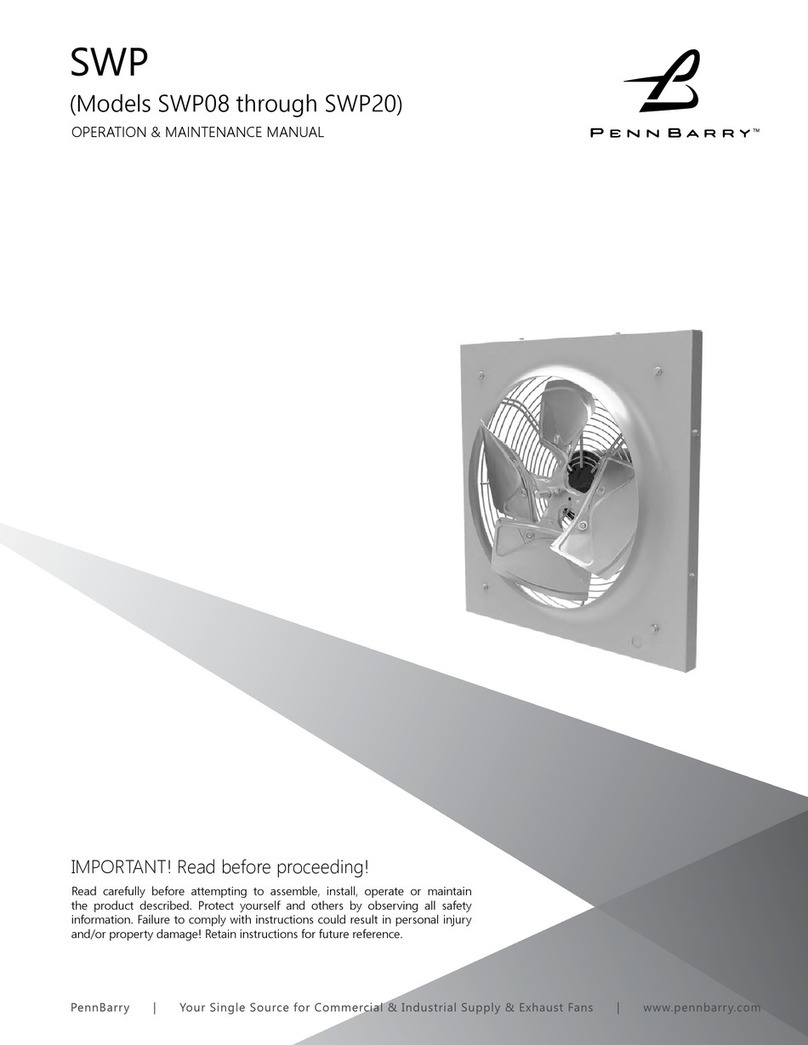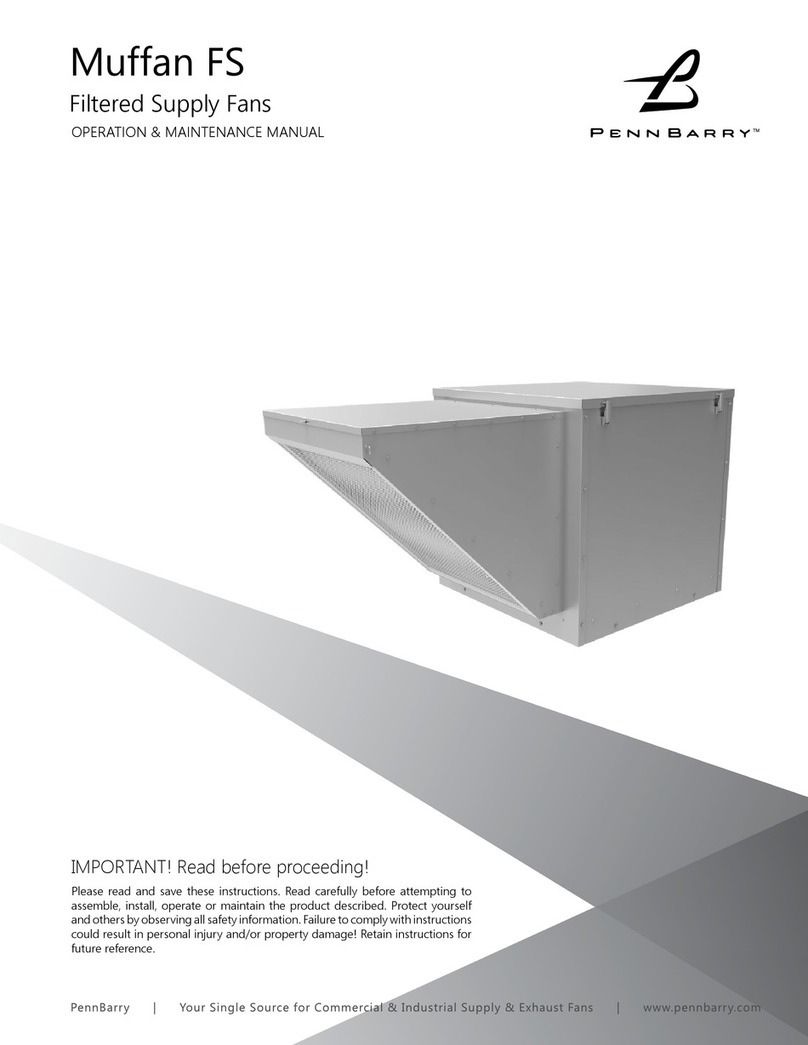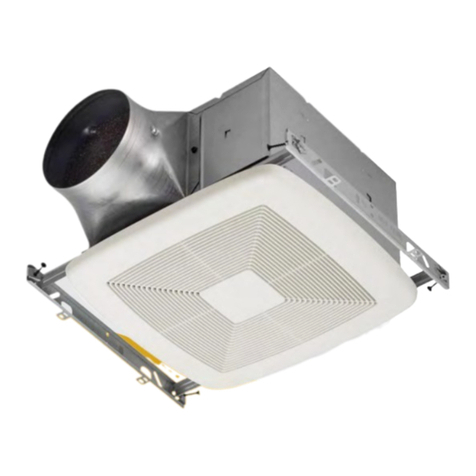Operation & Maintenance Manual Zephyrette & Zephyr Jr. Ceiling Exhaust Ventilators
2 PENNBARRY 1401 North Plano Road, Richardson, Texas 75081
Phone: 972-234-3202 Fax: 972-497-0468
5. Make certain the power source con-
forms to the requirements shown in
the performance chart.
6. Protect the power cord from
coming in contact with sharp
edges or other objects.
7. Do not kink the power cord or allow
it to come in contact with oil, grease,
hot surfaces or chemicals.
CAUTION
1. For general ventilating use only.
Do not use to exhaust hazardous
or explosive materials and vapors.
2. To avoid motor bearing damage
and noisy and/or unbalanced
impellers, keep drywall spray, con-
struction dust, etc. off power unit.
3. Please read specification label
on product for further information
and requirements.
ELECTRICAL CONNECTIONS
1. Connect motor per nameplate
to correct power supply.
2. Install all wiring, protection and
grounding in accordance with
the National Electrical Code (NEC)
and all local requirements.
3. Follow all local electrical and
safety codes, as well as the
National Electrical Code (NEC)
and the Occupational Safety
and Health Act (OSHA).
Make the necessary
connections by using
two wire nuts. A separate ground
wire must be connected to the
grounding screw. Replace the cover
of the junction box.
To reduce the risk of
injury of person, install
fan at least seven feet above the floor, if no
guard or grill is supplied.
BEFORE A CEILING IS INSTALLED
WITH ACCESS FROM BELOW
Figure 2: Wiring Diagram
1. Disconnect motor cord and plug
from internal terminal and receptacle
before starting installation
(see figure 2).
2. Assemble adjustable flanges to fan
housing with four self-tapping metal
screws (provided). Adjustable
flanges should be located as
illustrated in Figure 3.
3. Secure the adjustable flanges to
each joist. Attach a properly sized
duct to the duct sleeve mounted on
the fan housing. Connect this duct
system to the appropriate size wall
cap or roof cap (see Figure 3).
4. Before wiring is attempted, Always
lock out the primary and secondary
power source. Utilizing the pre-
punched hole found at the terminal
box on the fan housing, insert a 3/8"
electrical connector. All wiring should
be in strict accordance with the
National Electrical Code and local,
state and federal standards.
5. If building out is necessary, an
appropriate piece(s) of wood should
be utilized. Nail wood spacer(s)
to joist(s) at the point where the fan
will be installed; the fan housing
should fit between the two joists
(or between the built-out spacers)
with approximately 1/2" clearance.
spacers should be sized according
to the fan housing dimensions
(see Figure 4).
6. Complete installation by cutting
an 11-7/8" x 13-3/4" ceiling opening
for the unit. Use care not to
exceed this dimension when
installing the fan.
7. The egg crate ceiling grill should be
installed by screwing the grill into the
fan housing using the two 2" plastic
bolts supplied with each unit.
8. Automatically operated thermal
protector to reduce risk of injury;
disconnect power supply
before servicing.
WITH CEILING IN PLACE
1. Disconnect motor cord and
plug from internal terminal
box and receptacle before
starting installation.
2. Assemble adjustable flanges
to fan housing with four self-tapping
metal screws (provided). Adjustable
flanges should be located as
illustrated in Figure 5. Install the
duct and electrical service in
accordance with the instructions
listed in the previous section.
SUSPENDED CEILING SYSTEMS
Installation of ceiling fans in suspended
ceiling systems require a minimum 10
gauge solid wire for hanging or suspend-
ing the ceiling fan. Four wires per unit
should be connected to the pre-punched
holes of the adjustable mounting flanges
(after the flanges have been mounted to
the fan housing as outlined above).
Figure 4: Using Spacers
Blower Scroll Housing
Adjustable
Flanges
Finished Ceiling
Removable Deluxe Face Grill
Duct-To
Outside
Duct Sleeve
Electrical
Leads
for
Conduit
Fan
Housing
Joist
Motor
115 volt
Thermoprotected
Plug
Receptacle
Junction Box
Wire
Nut
White
Ground
Screw
Ground Wire
Black
Wire
Nut
Joist ‘A’Joist ‘B’
Finished
Ceiling
Wood Spacer
1/2"
Figure 3: Typical Ceiling Installation
Adjustable Mounting Flanges
Backdraft
Damper
